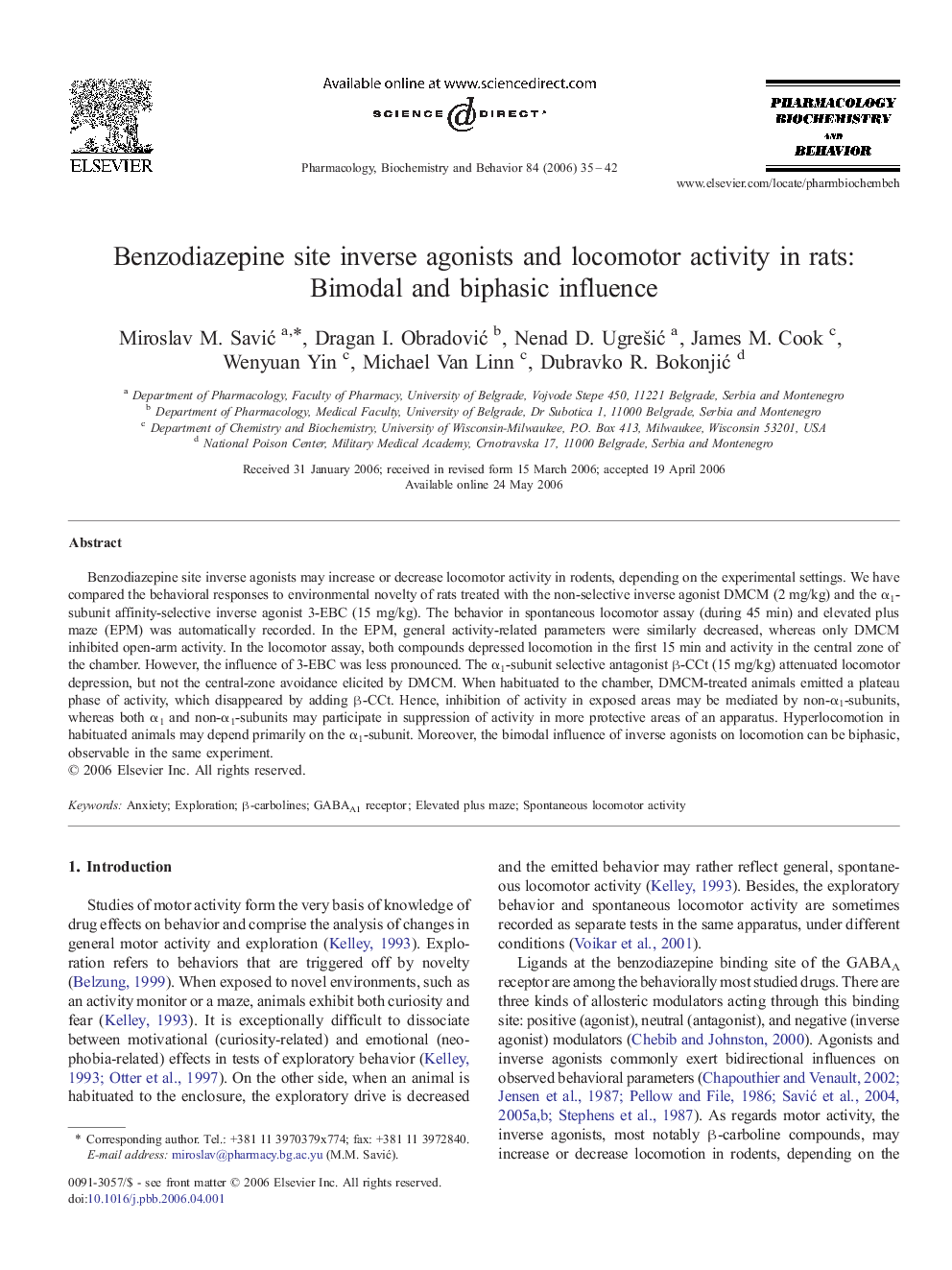| Article ID | Journal | Published Year | Pages | File Type |
|---|---|---|---|---|
| 2014570 | Pharmacology Biochemistry and Behavior | 2006 | 8 Pages |
Benzodiazepine site inverse agonists may increase or decrease locomotor activity in rodents, depending on the experimental settings. We have compared the behavioral responses to environmental novelty of rats treated with the non-selective inverse agonist DMCM (2 mg/kg) and the α1-subunit affinity-selective inverse agonist 3-EBC (15 mg/kg). The behavior in spontaneous locomotor assay (during 45 min) and elevated plus maze (EPM) was automatically recorded. In the EPM, general activity-related parameters were similarly decreased, whereas only DMCM inhibited open-arm activity. In the locomotor assay, both compounds depressed locomotion in the first 15 min and activity in the central zone of the chamber. However, the influence of 3-EBC was less pronounced. The α1-subunit selective antagonist β-CCt (15 mg/kg) attenuated locomotor depression, but not the central-zone avoidance elicited by DMCM. When habituated to the chamber, DMCM-treated animals emitted a plateau phase of activity, which disappeared by adding β-CCt. Hence, inhibition of activity in exposed areas may be mediated by non-α1-subunits, whereas both α1 and non-α1-subunits may participate in suppression of activity in more protective areas of an apparatus. Hyperlocomotion in habituated animals may depend primarily on the α1-subunit. Moreover, the bimodal influence of inverse agonists on locomotion can be biphasic, observable in the same experiment.
